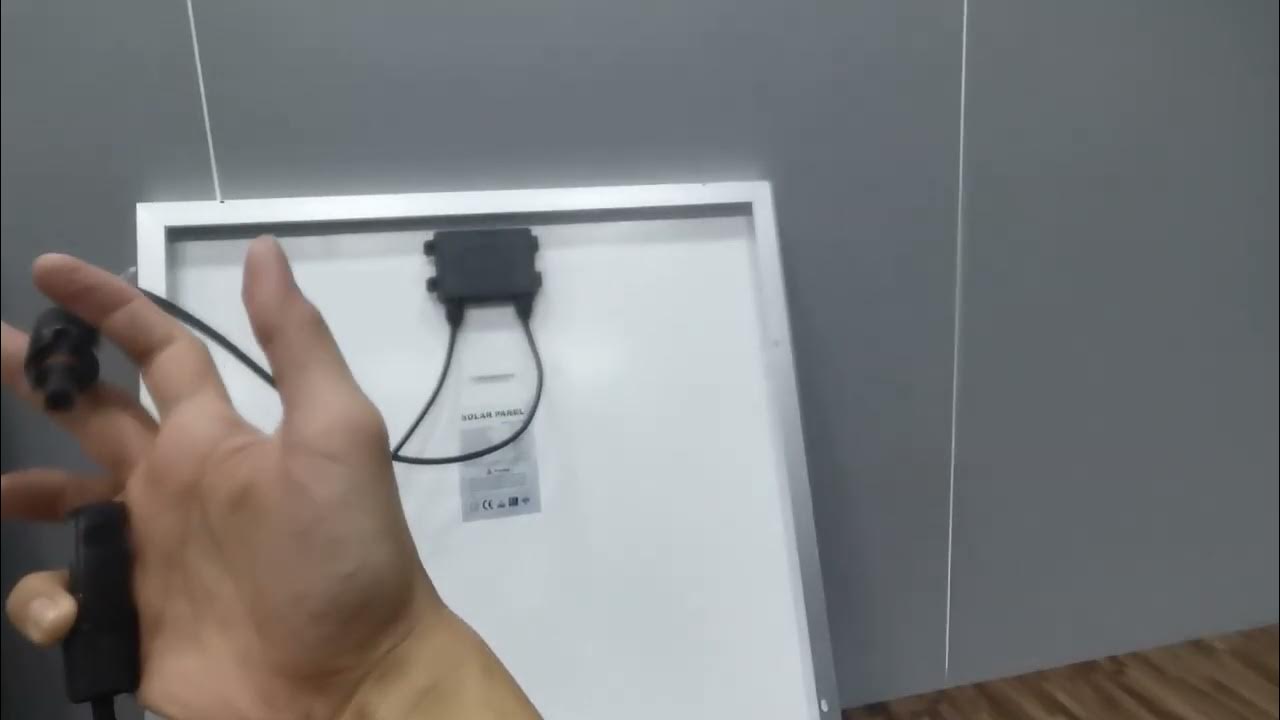MENGHITUNG DAN MENENTUKAN KEBUTUHAN PLTS SKALA RUMAH
Summary
TLDRThis video tutorial guides viewers through the process of calculating the components needed for a home solar power system (PLTS). It covers essential steps, including determining energy consumption, accounting for solar panel efficiency losses, and selecting the right components like solar panels, batteries, an inverter, and a charge controller. Using practical examples, the video demonstrates how to size solar panels, calculate battery storage, and choose an appropriate inverter and charge controller. The video offers a comprehensive, easy-to-follow approach to designing an effective home solar system.
Takeaways
- 😀 The video explains how to calculate the energy needs for a home-based solar power system (PLTS).
- 😀 The total electrical power requirement for the home’s devices is calculated as 4,260 watts based on usage patterns.
- 😀 Solar panels are not 100% efficient due to energy loss, so the actual power requirement is calculated to be 7,100 watts after accounting for a 40% loss.
- 😀 The peak wattage (Watt Peak) of solar panels is calculated by dividing the total required power by the number of sunlight hours (5 hours in Indonesia). This gives a required peak wattage of 1,420 watts.
- 😀 To meet the peak wattage of 1,420 watts, 15 solar panels, each with a 100-watt peak rating, are needed.
- 😀 Batteries serve as energy storage for the solar system, storing excess energy produced during the day for use at night.
- 😀 Energy loss occurs in batteries and inverters, so a 5% loss is considered, which results in a total energy need of 4,480 watts for battery storage.
- 😀 The total number of batteries required is calculated as 4, considering a 12-volt, 100-Ah battery, but since batteries shouldn't be discharged fully, the number of batteries needed is doubled to 8 for adequate storage.
- 😀 An inverter is necessary to convert DC voltage from the solar panels and batteries to AC voltage, which is used by home appliances. A 1,000-watt inverter is selected based on the total load of 805 watts.
- 😀 The Solar Charge Controller (SCC) is required to manage the charging of the batteries, and based on the solar panel specifications, a 100-ampere SCC is chosen for this system.
- 😀 The complete setup includes 15 solar panels, 8 batteries, a 1,000-watt inverter, and a 100-ampere SCC for managing the energy production and storage in a residential solar power system.
Q & A
What is the total energy requirement for the lighting in this home solar system setup?
-The total energy requirement for the lights is 150 watt-hours per day, calculated from three 15-watt lamps used for 10 hours daily.
How is the total energy requirement for all electrical equipment in the home calculated?
-The total energy requirement for all electrical equipment is calculated as 4,260 watt-hours per day, based on the combined usage of all devices in the home.
Why is there a need to adjust the total energy requirement due to energy loss in solar panels?
-Solar panels are not 100% efficient, and there is a 40% energy loss. Only 60% of the energy generated by the panels can be utilized, which is why the total energy requirement needs to be adjusted.
What is the actual energy demand after accounting for the loss from the solar panels?
-The actual energy demand, after considering the 40% loss, is 7,100 watt-hours.
How do you calculate the watt-peak or peak wattage required for the solar panels?
-The watt-peak is calculated by dividing the actual energy demand (7,100 watt-hours) by the optimal sunlight hours (5 hours), resulting in a peak output requirement of 1,420 watts.
How many solar panels are needed to meet the peak output of 1,420 watts?
-Since each solar panel has a watt-peak of 100 watts, 1,420 watts divided by 100 watts per panel gives 15 panels.
Why is a 50% buffer considered when calculating battery storage requirements?
-A 50% buffer is added to prevent over-discharging of the batteries, which can damage them. Therefore, the number of batteries is doubled to ensure the batteries remain in good condition.
How many batteries are required for the home solar system, and why?
-8 batteries (12V, 100Ah) are required, as the initial calculation suggested 4 batteries, but the buffer to prevent over-discharge leads to doubling this number.
What is the role of the inverter in a solar power system?
-The inverter's role is to convert the DC voltage generated by the solar panels and stored in the batteries into AC voltage, which is required by most household appliances.
What is the recommended capacity for the inverter in this solar system setup?
-A 1,000-watt inverter is recommended, as the total energy demand of all devices is 805 watts, and the inverter should be rated higher than the total load.
How is the appropriate charge controller size determined in this solar system?
-The charge controller size is determined by the short-circuit current (ISC) of the solar panels. With 15 panels and each having an ISC of 5.89A, the total current is 88.35A, so a 100A charge controller is chosen.
Outlines

This section is available to paid users only. Please upgrade to access this part.
Upgrade NowMindmap

This section is available to paid users only. Please upgrade to access this part.
Upgrade NowKeywords

This section is available to paid users only. Please upgrade to access this part.
Upgrade NowHighlights

This section is available to paid users only. Please upgrade to access this part.
Upgrade NowTranscripts

This section is available to paid users only. Please upgrade to access this part.
Upgrade NowBrowse More Related Video

Skema Rangkaian Panel Surya PLTS (Pembangkit Listrik Tenaga Surya/Matahari)

ROFIL PELAJAR PANCASILA: BERNALAR KRITIS

Panel surya hybrid dengan ATS

Sistem Absensi Online Menggunakan kartu RFID

Sistem Penyiraman Tanaman Otomatis dengan Arduino Uno & Sensor Kelembapan Tanah | Easy Solution !!!

Video Perakitan Komputer
5.0 / 5 (0 votes)